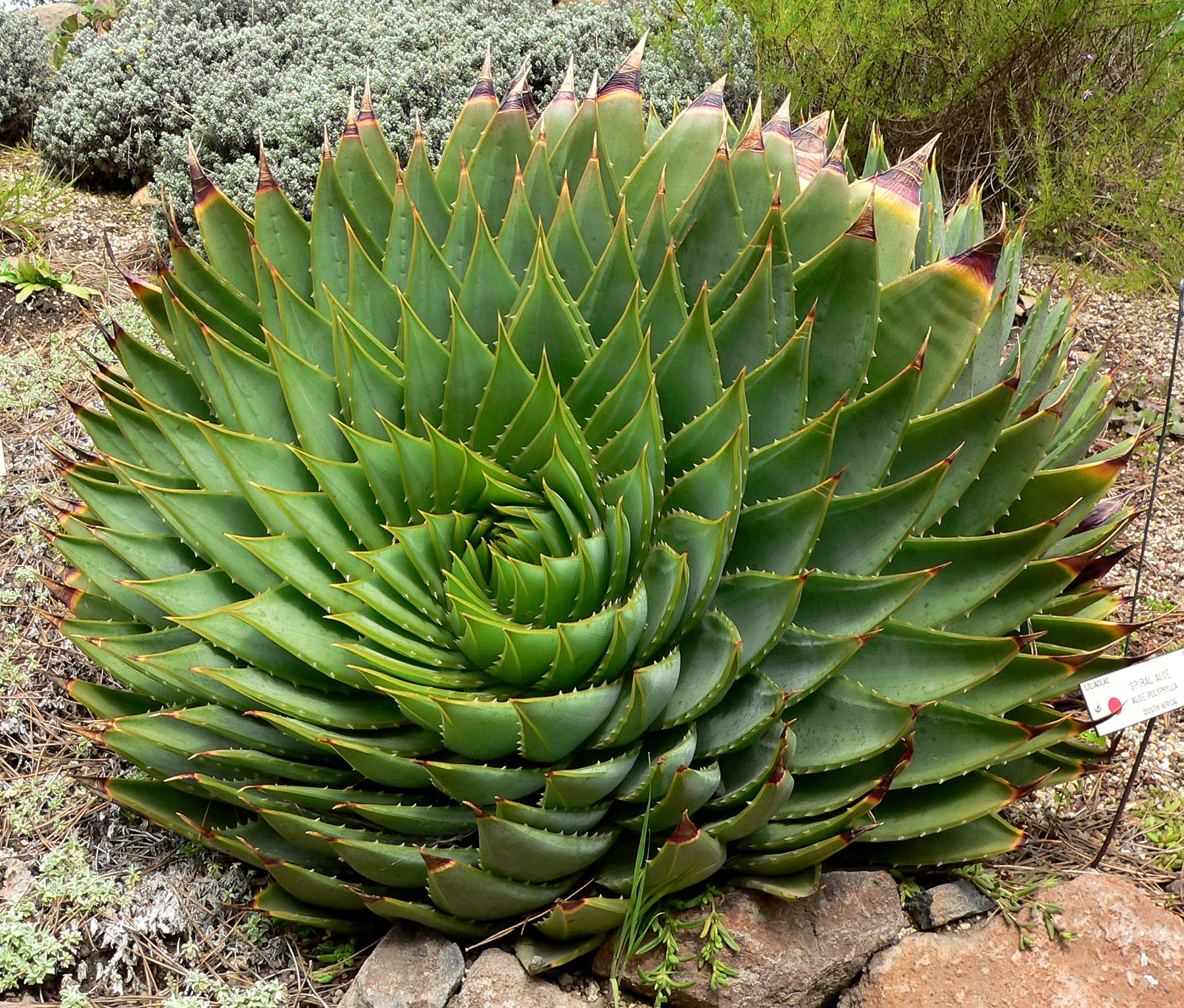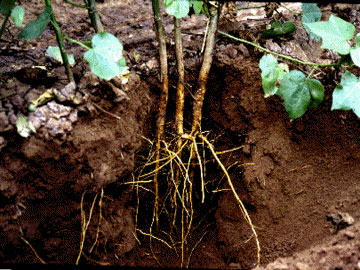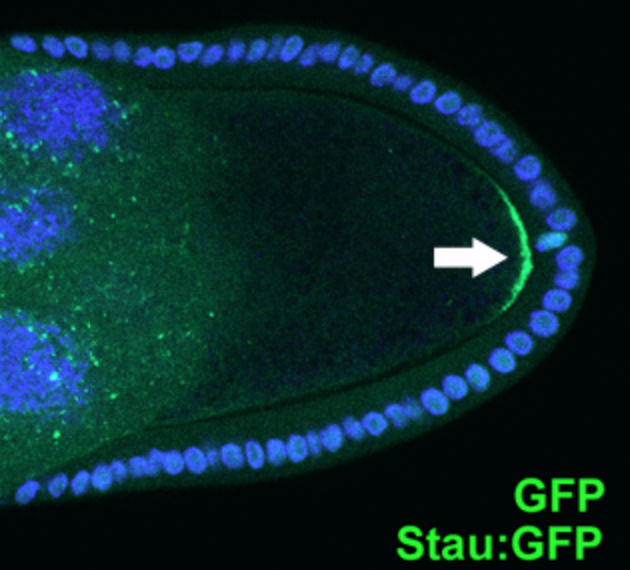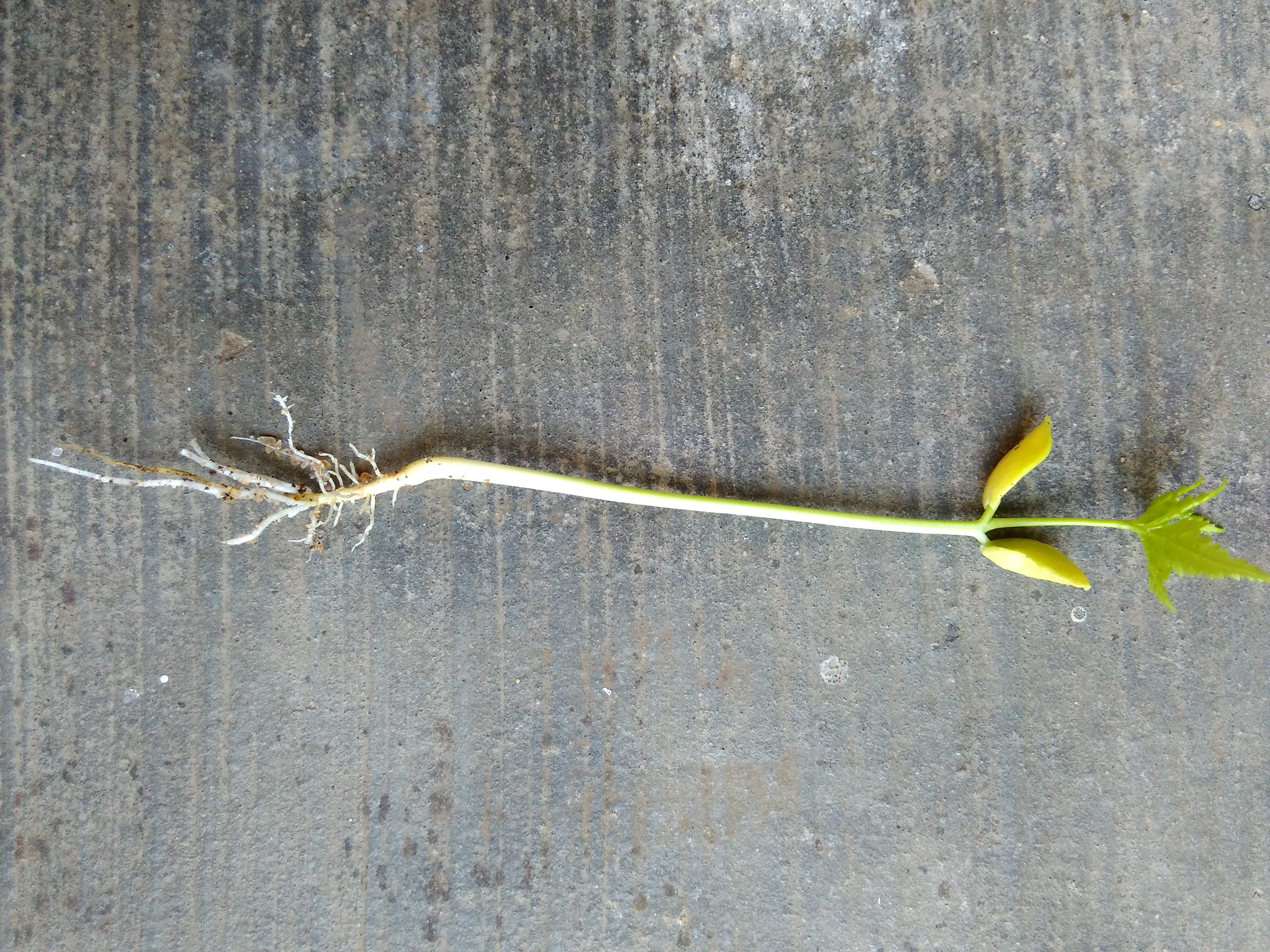|
Primordium
A primordium (; plural: primordia; synonym: anlage) in embryology, is an organ or tissue in its earliest recognizable stage of development. Cells of the primordium are called primordial cells. A primordium is the simplest set of cells capable of triggering growth of the would-be organ and the initial foundation from which an organ is able to grow. In flowering plants, a floral primordium gives rise to a flower. Although it is a frequently used term in plant biology, the word is used in describing the biology of all multicellular organisms (for example: a tooth primordium in animals, a leaf primordium in plants or a sporophore primordium in fungi.) Primordium development in plants Plants produce both leaf and flower primordia cells at the shoot apical meristem (SAM). Primordium development in plants is critical to the proper positioning and development of plant organs and cells. The process of primordium development is intricately regulated by a set of genes that affect the ... [...More Info...] [...Related Items...] OR: [Wikipedia] [Google] [Baidu] |
Adventitious Roots
Important structures in plant development are buds, shoots, roots, leaves, and flowers; plants produce these tissues and structures throughout their life from meristems located at the tips of organs, or between mature tissues. Thus, a living plant always has embryonic tissues. By contrast, an animal embryo will very early produce all of the body parts that it will ever have in its life. When the animal is born (or hatches from its egg), it has all its body parts and from that point will only grow larger and more mature. However, both plants and animals pass through a phylotypic stage that evolved independently and that causes a developmental constraint limiting morphological diversification. According to plant physiologist A. Carl Leopold, the properties of organization seen in a plant are emergent properties which are more than the sum of the individual parts. "The assembly of these tissues and functions into an integrated multicellular organism yields not only the characteri ... [...More Info...] [...Related Items...] OR: [Wikipedia] [Google] [Baidu] |
Auxin
Auxins (plural of auxin ) are a class of plant hormones (or plant-growth regulators) with some morphogen-like characteristics. Auxins play a cardinal role in coordination of many growth and behavioral processes in plant life cycles and are essential for plant body development. The Dutch biologist Frits Warmolt Went first described auxins and their role in plant growth in the 1920s. Kenneth V. Thimann became the first to isolate one of these phytohormones and to determine its chemical structure as indole-3-acetic acid (IAA). Went and Thimann co-authored a book on plant hormones, ''Phytohormones'', in 1937. Overview Auxins were the first of the major plant hormones to be discovered. They derive their name from the Greek word αυξειν (''auxein'' – "to grow/increase"). Auxin is present in all parts of a plant, although in very different concentrations. The concentration in each position is crucial developmental information, so it is subject to tight regulation through both ... [...More Info...] [...Related Items...] OR: [Wikipedia] [Google] [Baidu] |
Arabidopsis Thaliana
''Arabidopsis thaliana'', the thale cress, mouse-ear cress or arabidopsis, is a small flowering plant native to Eurasia and Africa. ''A. thaliana'' is considered a weed; it is found along the shoulders of roads and in disturbed land. A winter annual with a relatively short lifecycle, ''A. thaliana'' is a popular model organism in plant biology and genetics. For a complex multicellular eukaryote, ''A. thaliana'' has a relatively small genome around 135 megabase pairs. It was the first plant to have its genome sequenced, and is a popular tool for understanding the molecular biology of many plant traits, including flower development and light sensing. Description ''Arabidopsis thaliana'' is an annual (rarely biennial) plant, usually growing to 20–25 cm tall. The leaves form a rosette at the base of the plant, with a few leaves also on the flowering stem. The basal leaves are green to slightly purplish in color, 1.5–5 cm long, and 2–10 mm broad, wit ... [...More Info...] [...Related Items...] OR: [Wikipedia] [Google] [Baidu] |
Lateral Root
Lateral roots, emerging from the pericycle (meristematic tissue), extend horizontally from the primary root (radicle) and over time makeup the iconic branching pattern of root systems. They contribute to anchoring the plant securely into the soil, increasing water uptake, and facilitates the extraction of nutrients required for the growth and development of the plant. Lateral roots increase the surface area of a plant's root system and can be found in great abundance in several plant species. In some cases, lateral roots have been found to form symbiotic relationships with rhizobia (bacteria) and mycorrhizae (fungi) found in the soil, to further increase surface area and increase nutrient uptake. Several factors are involved in the formation and development of lateral roots. Regulation of root formation is tightly controlled by plant hormones such as auxin, and by the precise control of aspects of the cell cycle. Such control can be particularly useful, as increased auxin levels ... [...More Info...] [...Related Items...] OR: [Wikipedia] [Google] [Baidu] |
Phyllotaxis
In botany, phyllotaxis () or phyllotaxy is the arrangement of leaves on a plant stem. Phyllotactic spirals form a distinctive class of patterns in nature. Leaf arrangement The basic arrangements of leaves on a stem are opposite and alternate (also known as spiral). Leaves may also be whorled if several leaves arise, or appear to arise, from the same level (at the same node) on a stem. With an opposite leaf arrangement, two leaves arise from the stem at the same level (at the same node), on opposite sides of the stem. An opposite leaf pair can be thought of as a whorl of two leaves. With an alternate (spiral) pattern, each leaf arises at a different point (node) on the stem. Distichous phyllotaxis, also called "two-ranked leaf arrangement" is a special case of either opposite or alternate leaf arrangement where the leaves on a stem are arranged in two vertical columns on opposite sides of the stem. Examples include various bulbous plants such as ''Boophone''. It also ... [...More Info...] [...Related Items...] OR: [Wikipedia] [Google] [Baidu] |
Root Primordia
In vascular plants, the roots are the organs of a plant that are modified to provide anchorage for the plant and take in water and nutrients into the plant body, which allows plants to grow taller and faster. They are most often below the surface of the soil, but roots can also be aerial or aerating, that is, growing up above the ground or especially above water. Function The major functions of roots are absorption of water, plant nutrition and anchoring of the plant body to the ground. Anatomy Root morphology is divided into four zones: the root cap, the apical meristem, the elongation zone, and the hair. The root cap of new roots helps the root penetrate the soil. These root caps are sloughed off as the root goes deeper creating a slimy surface that provides lubrication. The apical meristem behind the root cap produces new root cells that elongate. Then, root hairs form that absorb water and mineral nutrients from the soil. The first root in seed producing plants is the ra ... [...More Info...] [...Related Items...] OR: [Wikipedia] [Google] [Baidu] |
Genes
In biology, the word gene (from , ; "... Wilhelm Johannsen coined the word gene to describe the Mendelian units of heredity..." meaning ''generation'' or ''birth'' or ''gender'') can have several different meanings. The Mendelian gene is a basic unit of heredity and the molecular gene is a sequence of nucleotides in DNA that is transcribed to produce a functional RNA. There are two types of molecular genes: protein-coding genes and noncoding genes. During gene expression, the DNA is first copied into RNA. The RNA can be directly functional or be the intermediate template for a protein that performs a function. The transmission of genes to an organism's offspring is the basis of the inheritance of phenotypic traits. These genes make up different DNA sequences called genotypes. Genotypes along with environmental and developmental factors determine what the phenotypes will be. Most biological traits are under the influence of polygenes (many different genes) as well as g ... [...More Info...] [...Related Items...] OR: [Wikipedia] [Google] [Baidu] |
Shoot Apical Meristem
The meristem is a type of tissue found in plants. It consists of undifferentiated cells (meristematic cells) capable of cell division. Cells in the meristem can develop into all the other tissues and organs that occur in plants. These cells continue to divide until a time when they get differentiated and then lose the ability to divide. Differentiated plant cells generally cannot divide or produce cells of a different type. Meristematic cells are undifferentiated or incompletely differentiated. They are totipotent and capable of continued cell division. Division of meristematic cells provides new cells for expansion and differentiation of tissues and the initiation of new organs, providing the basic structure of the plant body. The cells are small, with no or small vacuoles and protoplasm fills the cell completely. The plastids (chloroplasts or chromoplasts), are undifferentiated, but are present in rudimentary form ( proplastids). Meristematic cells are packed closely together ... [...More Info...] [...Related Items...] OR: [Wikipedia] [Google] [Baidu] |
Plant Morphology
Phytomorphology is the study of the physical form and external structure of plants.Raven, P. H., R. F. Evert, & S. E. Eichhorn. ''Biology of Plants'', 7th ed., page 9. (New York: W. H. Freeman, 2005). . This is usually considered distinct from plant anatomy, which is the study of the internal structure of plants, especially at the microscopic level. Plant morphology is useful in the visual identification of plants. Recent studies in molecular biology started to investigate the molecular processes involved in determining the conservation and diversification of plant morphologies. In these studies transcriptome conservation patterns were found to mark crucial ontogenetic transitions during the plant life cycle which may result in evolutionary constraints limiting diversification. Scope Plant morphology "represents a study of the development, form, and structure of plants, and, by implication, an attempt to interpret these on the basis of similarity of plan and origin". ... [...More Info...] [...Related Items...] OR: [Wikipedia] [Google] [Baidu] |
Cell Polarity
Cell polarity refers to spatial differences in shape, structure, and function within a cell. Almost all cell types exhibit some form of polarity, which enables them to carry out specialized functions. Classical examples of polarized cells are described below, including epithelial cells with apical-basal polarity, neurons in which signals propagate in one direction from dendrites to axons, and migrating cells. Furthermore, cell polarity is important during many types of asymmetric cell division to set up functional asymmetries between daughter cells. Many of the key molecular players implicated in cell polarity are well conserved. For example, in metazoan cells, the PAR-3/PAR-6/aPKC complex plays a fundamental role in cell polarity. While the biochemical details may vary, some of the core principles such as negative and/or positive feedback between different molecules are common and essential to many known polarity systems. Examples of polarized cells Epithelial cells Epithe ... [...More Info...] [...Related Items...] OR: [Wikipedia] [Google] [Baidu] |
Dicotyledon
The dicotyledons, also known as dicots (or, more rarely, dicotyls), are one of the two groups into which all the flowering plants (angiosperms) were formerly divided. The name refers to one of the typical characteristics of the group: namely, that the seed has two embryonic leaves or cotyledons. There are around 200,000 species within this group. The other group of flowering plants were called monocotyledons (or monocots), typically each having one cotyledon. Historically, these two groups formed the two divisions of the flowering plants. Largely from the 1990s onwards, molecular phylogenetic research confirmed what had already been suspected: that dicotyledons are not a group made up of all the descendants of a common ancestor (i.e., they are not a monophyletic group). Rather, a number of lineages, such as the magnoliids and groups now collectively known as the basal angiosperms, diverged earlier than the monocots did; in other words, monocots evolved from within th ... [...More Info...] [...Related Items...] OR: [Wikipedia] [Google] [Baidu] |









